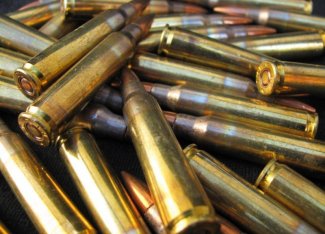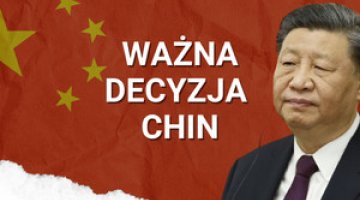ASAP: EU support for ammunition production in member states

The military support that NATO and EU countries have been providing to Ukraine since the beginning of the Russian invasion has revealed a significant reduction in their stocks of ammunition (including artillery ammunition) since the end of the Cold War and their limited capabilities to produce it in Europe. The European Commission (EC) has joined the effort to change this state of affairs as it sees the Russia-Ukraine war as an opportunity to strengthen the Common Security and Defence Policy (CSDP) and consolidate the European Defence Technology and Industrial Base (EDTIB). The Act in Support of Ammunition Production (ASAP), a regulation aimed at stimulating the development of the arms industries in EU countries, in particular at ramping up the production of ammunition, missiles and their components by co-financing joint projects, came into force at the end of July this year. The ASAP may make it easier for European companies to overcome production barriers and encourage them to cooperate with each other. However, European ammunition production will only increase significantly on condition that individual member states place sufficiently large orders.
Artillery ammunition: European needs and shortages
The political will expressed by EU countries to support Ukraine ‘as long as it takes’ and to strengthen their own military capabilities contrasts with the unpreparedness of European arms plants for a significant and long-lasting increase in production. The shortcomings are particularly visible in the area of ammunition production, including the 155 mm-calibre bullets which Ukrainians have already been using widely in the Western-produced barrel artillery supplied to them (including Polish Krabs, French Caesars and German PzH2000s) and the 152 mm-calibre bullets used in post-Soviet artillery systems.[1]
The ownership structure of ammunition manufacturers in the EU has become complicated after years of transformation in the European arms industry. Plants operating in individual countries are now part of large multinational corporations. For example, Germany’s Rheinmetall, in addition to its factories in Germany and Switzerland, purchased also the Spanish company Expal in August this year. France’s Nexter has three production plants in France, and also owns the Italian company Simmel Difesa and the Belgian company Necar. The Czech STV Group and the Polish PGZ (which owns the Belma, Dezamet, Gamrat, Mesko and Nitro-Chem plants) also play important roles. Some European producers have been bought by non-European companies (for example, the Spanish company Santa Barbara was taken over by General Dynamics, based in the US). Manufacturers with significant capabilities outside the EU include Britain’s BAE Systems and the Norwegian company Nammo. Since orders from EU/NATO countries have been relatively low over the past 30 years, the annual output of 155-mm artillery ammunition has ranged between 20,000 and 30,000 pieces at the largest production plants (the maximum production capacity of the entire EU is estimated at 230,000 missiles each year). Meanwhile, the Ukrainian army uses around 25,000 – 40,000 pieces of such ammunition each week. For comparison, the United States has managed to raise its monthly production output from 15,000 since the beginning of the war to 30,000 pieces, and plans to reach 90,000 by the beginning of 2025 (the US has so far delivered approximately 2 million 155-mm shells to Ukraine)[2]. The EU/NATO countries are also far from achieving the ammunition stockpile targets agreed by the Alliance in 2014 to be able to conduct a 30-day high-intensity armed conflict. In the case of Germany alone, collecting this amount of ammunition would cost €20 billion.
The situation in Europe is slowly improving: the German government signed a framework agreement with Rheinmetall in July this year under which several hundred thousand missiles (including 155 mm-calibre) worth a total of €1.2 billion will be purchased by 2029. The German company’s management believes that its annual production capacity may reach up to 600,000 pieces (Expal’s capacity included)[3]. The need to switch to a ‘war economy’ as announced by French President Emmanuel Macron has so far been manifested by France’s adoption of a military programming bill (LPM) for 2024–2030. It envisages allocating €16 billion for the purchase of ammunition, but only around €3 billion for barrel shells, including 155-mm artillery shells. Starting from 2023, the French Ministry of Defence is to order approximately 15,000 missiles of this type annually,[4] although industry representatives claim that this is not a sufficient incentive to permanently increase production. Norway’s Nammo has announced that its annual output of 155-mm shells will reach 200,000 in 2028. However, the Norwegian government have so far ordered only 35,000 pieces of ammunition from this company; these are the first such orders in 30 years, while pre-war production stood at around 10,000 per year.[5] Poland intends to spend 12 billion zloty (c. US$2.7 billion) to purchase 800,000 pieces of ammunition, mainly 155 mm and 120 mm-calibre missiles, by 2029. The plants controlled by the PGZ consortium plan to increase their annual production capacity from 20,000–40,000 up to 200,000 pieces.[6]
The EU’s efforts to bolster ammunition production
The EU institutions see efforts to alleviate the ‘ammunition crisis’ as an opportunity to strengthen the CSDP. In March 2022 the EU adopted the ‘Strategic Compass’ security strategy,[7] which had been developed before Russia attacked Ukraine. At that time, both the EC as a whole and its most active member states began to look for opportunities to launch new initiatives in this area. At the same time, they decided at the European Council meeting in Versailles “to develop further incentives to stimulate Member States’ collaborative investments in joint projects and joint procurement of defence capabilities”[8]. This was to be preceded by an assessment of shortcomings and weaknesses, as delineated in May 2022 in a joint communiqué from the European Commission and the High Representative of the Union for Foreign Affairs and Security Policy on the Defence Investment Gaps Analysis and Way Forward.[9] One of the gaps identified was an inability to produce large quantities of ammunition quickly, so they recommended popularising the practice of holding joint tenders.
In February this year the Estonian government submitted a document suggesting that the EU allocate €4 billion to purchase one million rounds of ammunition for Ukraine. In March this year Kyiv asked the EU to supply 155-mm artillery shells. In response, the Council of the EU agreed to a three-stage plan to this effect. The first two stages were: to reimburse the costs of missiles transferred to Ukraine by member states, and to jointly purchase one million pieces, financed up to €2 billion by the European Peace Facility.[10] As part of the second stage, eight framework agreements have been concluded so far (five of them were signed on 5 September 2023), but their content has not yet been made public. The third stage was prepared by the European Commission and presented on 3 May this year in the form of a draft regulation as the Act in Support of Ammunition Production (ASAP).[11] It envisages the allocation of €500 million for measures aimed at supporting industrial plants in boosting their capacity to produce ammunition, as well as securing the supply chains of raw materials and components, shortening delivery times and relieving production bottlenecks by 2025 (see Appendix for more details). Given the exceptional circumstances, the regulation was endorsed at an accelerated pace, and was adopted in just three months (on 13 July by the European Parliament and on 20 July by the Council of the EU).
The European Commission’s proposal that the regulation should vest it with competences to monitor ammunition plants and their productivity, and even impose priority orders on them under threat of penalty at the request of a member state, provoked the most controversy, and indeed temporarily threatened the very future of the ASAP. This mechanism was opposed, under pressure from their industries, by countries with large production potential (France and Germany) or those that in principle are opposed to expanding the powers of EU institutions (such as Poland). In particular, there were fears that the EC’s conduct could provide a pretext to discriminate in favour of some industrial plants and against others, which would distort the rules of competition. Belgium and Estonia supported the European Commission’s ambitions in a separate declaration.
The practical and political impact of the ASAP
The European Union’s initiatives to support ammunition production should be viewed as a whole, taking all three stages of the plan approved by the Council of the EU into account. The first two were aimed at mobilising member states to transfer their ammunition stocks to Ukraine and encourage joint purchases in order to minimise the effect of competition within the EU, which additionally limits supply and increases product prices. The ASAP Regulation, for its part, may bring results in the medium and long run, as it provides manufacturers with the means to overcome investment difficulties (such as access to loans, components or raw materials). However, the main incentive for the arms industry to ramp up ammunition production, as desired by the EU, will be large and planned long-term orders from member states. Such orders will give the manufacturers a sense of stability and reduce their risks. For these assumptions to come true, however, it will be necessary to reverse the policy of limiting ammunition stocks dictated by the desire to cut costs. It is still an open question whether those member states that are not exposed to imminent threat of high-intensity war on their territory or in their immediate neighbourhood will find this move reasonable.
The financial envelope envisaged under the ASAP stands at €500 million, which is far from satisfying the needs of the European arms industry. However, it should be noted that the funds are intended to solve production, logistic and financial problems rather than finance the production itself. The regulation was passed as part of the efforts the European Commission has been making for several years to develop the CSDP, and is intended to remove barriers limiting the supply of ammunition. Meanwhile, there are other solutions which should encourage member states to make joint procurements (and thus increase demand), such as the European Defence Industry Reinforcement through Common Procurement Act (EDIRPA) which is about to be adopted.[12] The fact that the ASAP is partially financed from the EDIRPA budget (see Appendix for more details) reveals the paradox of the situation, as well as the gap between the ambitions of the EC and some member states as regards the CSDP, and the absence of will to allocate significant sums of money for these purposes.
Restricting access to ASAP financing for non-EU companies is a particularly important issue for the European Commission and those member states that see the regulation as a major precedent on the way to strengthening the EDTIB, even if it makes the efforts to support Ukraine less effective. However, the inclusion of ‘associated countries’ in the ASAP means that such important ammunition manufacturers as Norway’s Nammo will be able to participate in the programme. Some member states have opposed the EC’s efforts to expand its competences in setting the rules of operation of the European defence industry. Interestingly enough, some of the countries that have supported the development of European defence most strongly, such as France, now find themselves among those who want to curb the EC’s ambitions. In this way the French government has found itself resisting the intentions of Thierry Breton, the French Commissioner for the Internal Market, who normally works well with Macron.
Time will tell to what extent the actions taken on the basis of the ASAP and EDIRPA harmonise with the NATO efforts declared at the Vilnius summit. The Defence Production Action Plan was approved during the summit to improve the interoperability and standardisation of weapons and military equipment in NATO.[13] The restrictions contained in the ASAP would significantly hinder cooperation with the US, Canada and other countries. This means that the two programmes may compete against each other rather than ensure the mutual cooperation and complementarity of European defence with NATO goals, as declared in both the EU’s Strategic Compass and the conclusions of the NATO summit.
APPENDIX
The ASAP factsheet
The timeframe during which the ASAP Regulation will apply is 28 July 2023 to 30 June 2025. The beneficiaries of the programme will, in principle, be entities, production plants and executive management structures based in the EU or associated countries. They cannot be subject to control by a non-associated third country or by a non-associated third country entity. In exceptional situations, the latter restriction may be waived if the EC is provided with guarantees regarding such issues as restricting access for a non-associated country to sensitive or classified information, or the entity’s ability to carry out the action financed without restrictions resulting from the legislation in force in the third country.
The planned financial envelope of €500 million must fit within the EU’s multiannual financial framework negotiated in 2021. To this end, the European Defence Fund (EDF) and the EDIRPA will each contribute half of the funds.
The ASAP provides for reimbursement of up to 35% of the costs of an ‘eligible action’ related to the capacities for production of the relevant defence products (leading to increasing production), and up to 40% of the costs of an eligible action that facilitates the acquisition of raw materials and components. Entities contributing to cross-border cooperation within the EU which prioritise the implementation of contracts commissioned jointly by at least three member states or associated countries, or by one member state, for the needs of Ukraine are eligible for an increased funding rate of 10 additional percentage points. It was agreed during the negotiations between the European Commission, the Council of the EU and the European Parliament that the 10% allowance will also be available to beneficiaries with SME or mid-cap company status.
Up to €50 million within the envelope is to be used to solve problems with access to financing (financial institutions do not engage in arms production for ecological and reputational reasons) and attracting private investments.
[1] A. Myroniuk, ‘Investigation: EU inability to ramp up production behind acute ammunition shortages in Ukraine’, The Kyiv Independent, 10 July 2023, kyivindependent.com.
[2] L. Jakes, ‘Europe Has Pledged a Million Shells for Ukraine in a Year. Can It Deliver?’, The New York Times, 9 April 2023, nytimes.com.
[3] T. Kington, E. Gosselin-Malo, ‘Behind Europe’s ammo pledge to Ukraine, some manufacturers grow leery’, Defense News, 19 June 2023, defensenews.com.
[4] ‘Audition de M. Sébastien Lecornu, ministre des Armées’, Sénat, 28 February 2023, videos.senat.fr.
[5] T. Kington, E. Gosselin-Malo, ‘Behind Europe’s ammo pledge…’, op. cit.
[6] Z. Lentowicz, ‘Polska zbrojeniówka podwoi produkcję amunicji’, Rzeczpospolita, 30 March 2023, radar.rp.pl.
[7] ‘A Strategic Compass for Security and Defence’, European External Action Service, eeas.europa.eu.
[8] ‘The Versailles declaration, 10 and 11 March 2022’, European Council and Council of the European Union, 11 March 2022, consilium.europa.eu.
[9] ‘Defence investment gaps and measures to address them’, European Commission, 23 May 2022, commission.europa.eu.
[10] Ł. Maślanka, ‘An EU War Chest: the success and uncertain future of the European Peace Facility’, OSW Commentary, no. 523, 10 July 2023, osw.waw.pl.
[11] ‘Act in Support of Ammunition Production (ASAP)’, European Commission, defence-industry-space.ec.europa.eu.
[12] ‘Proposal for a REGULATION OF THE EUROPEAN PARLIAMENT AND OF THE COUNCIL on establishing the European defence industry Reinforcement through common Procurement Act’, European Commission, 19 July 2022, eur-lex.europa.eu.
[13] J. Gotkowska, J. Graca et al., ‘NATO Summit in Vilnius: breakthroughs and unfulfilled hopes’, OSW Commentary, no. 526, 13 July 2023, osw.waw.pl.





